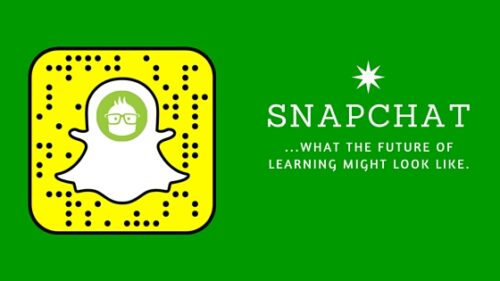Snapchat: A Possible Future for Learning and Development
2016 has been the year of Snapchat. For those of you not following social media trends, what has happened is similar to the slow adoption of twitter. I remember very clearly being told by many that twitter was a joke and they didn’t see the need for “knowing what everyone had for breakfast”. Real time communication to a widespread audience was not understood back then. People just didn’t get it. Now look at twitter. It’s used for all sorts of communication: breaking live news coverage and it’s made many people overnight celebrities.
Why You Don’t Get Snapchat
Today snapchat is where twitter was back around ’07 ’08. And you’re in that familiar spot where you just don’t get it. You probably first heard about Snapchat as a private messaging app that deleted your message after it was viewed. And of course this led to Snapchat becoming the poster child (app) for the sexting trend. This gave Snapchat a very dirty reputation. Then, in October 2013, Snapchat “got social” with Stories.
Snapchat Stories Changed the Game
Stories changed everything. Instead of messaging only one person at a time, you can now post to your Story and everyone that follows you is able to see your snaps. But each post is only viewable for 24hours, then it’s gone. That’s a pretty significant constraint if you’re uncomfortable having your creative work disappear 24hours after you’ve posted it.
Learn to Accept Vertical Video
Snapchat is also a vertical video medium. And, for many people, that is still just not acceptable. But you better get used to it. Some very creative snap chatters are already mastering the art of vertical video production. And most YouTube celebrities have already extended their brand into Snapchat. So, I think it’s safe to say that we should stop judging vertical video so harshly. It’s here to stay.
Filters, Text, and Drawing in Snapchat
And I can’t talk about snapchat without mentioning filters, text, and the drawing tool. These are the elements that set snapchat apart. And they are also what gives creatives the ability to add an artistic flare to their snaps. It’s more than just snapping a quick photo, or 10 second video. It’s about snapping just the right shot, in just the right way, so that you can creatively add these other elements. Just do a google search for best snapchat stories to get the idea.
Relating Snapchat to L&D
How does this relate to eLearning, or L&D, or corporate training? It doesn’t if you think snapchat will become your next authoring tool, or your next corporate social network. It’s not about the tool itself, but the trends it represents. Being creative within constraints is something people are getting comfortable with. And telling stories has been discussed in the L&D community for several years now.
Surviving Disruption in L&D
The disruption currently impacting L&D is about control, and relevance in the workplace. The industry struggles to find it’s place at a time when there is an abundance of content to learn from. And the workers of tomorrow are learning how to communicate in new ways today. The methods we created decades ago for L&D will not survive as they were. And if we are to better understand what is expected from future corporate learners, then we better learn to accept how they are learning to communicate and engage via technology. It’s not about supporting just training events, but instead supporting the entire learning process. It’s not hard to see how current social media trends might play in the future of L&D. Storytelling always has been, and always will be, an important factor in learning. With new technologies like Snapchat, we also need to stay open-minded about the possibilities presented to us within innovative technologies filled with constraints.
Think Inside the Box
What are the constraints that can lead to a more creative training organization? You know them already. They are the same constraints that you uncover every time you do an analysis of the content, audience, or context. What you are discovering are the constraints within which you create a learning experience. They create the box for you to think inside of… not outside. In the case of constraints you’re thinking inside the box. And that’s a good thing. Understanding the comfort your audience has for tools like Snapchat will give you insight into how our industry might be delivering content in the future.
Training, Learning and Development
L&D departments may be changing, but that doesn’t mean they are going away. Just because employees can communicate more efficiently and effectively than ever before doesn’t mean training isn’t necessary. New technologies always bring new challenges into businesses. And at the rate new technologies are growing, businesses are already falling behind. The L&D and training departments are uniquely positioned to bridge the skills gap. By offering learning content in newer formats, making them available on newer devices, and delivered at just the right time, we can become a critical part of the business again. The future is L&D’s for the taking. We can squander it wrestling with outdated methods, models, and tools, or we can embrace massive change, accept short term failures as we learn, and begin to accept training, learning and development as equals: One not better or worse than the other. As my friend and colleague Trish Uhl says, “Training is necessary, but not sufficient for learning.”






